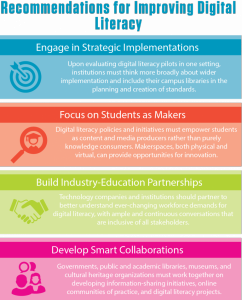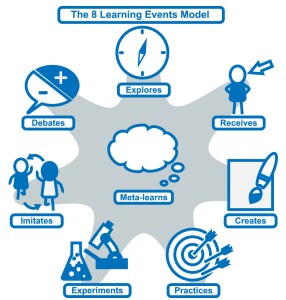The ALT Conference this year was held in Edinburgh. It was my first experience of ALTc and I was pretty excited about heading up to Scotland. Getting off the tram in the city centre on the Monday evening with Edinburgh Castle illuminated in lights was pretty amazing.
The conference was held in the University’s McEwan Hall. The building was incredible, as was the auditorium inside. Sat within the hall you couldn’t help but look up at the beautiful windows and artistry that covered the walls. Luckily not too distracting to keep me from listening in on the keynotes talks.
The list of workshops and talks over the three days was huge, so I took some great advice from my colleague, and steered away from my usual subjects. I took away a huge amount from these three days in Edinburgh, but I’ll mention the three keys areas that stood out for me.
Going back to basics
A large area for discussion throughout the conference was the idea of taking learning back to basics. Working within the learning technology field, there is often the assumption that we must always look for new and exciting technology that we can filter into our teaching. This can often mean the pedagogical side of the discussion or project can get lost within the technology.
Jesse Stommel’s keynote also talked about how some tools are ‘problematic to the core’. There were times in the talk where he was quite critical of certain tools we use. However, being critical is not always a bad thing and it leads us on to really think about the tools we are using and decide whether they are beneficial to our students, staff and our own learning.
It wasn’t however all doom and gloom, and I sat in on several talks that were using technology quite simply, but to great effect.
Here be Dragons: Dispelling Myths around BYOD Digital Examinations: Claudia Cox
This was a great short presentation on the use of digital exams at Brunel University. It was good to see a simple approach being taken to an area that could cause quite a lot of disturbance and resistance within a University. They broke down their projects into three areas; infrastructure, technical support, and training. Tackling these challenges in this way allowed the team to put more thought into their projects and focus on their objectives and outcomes. I liked how research even went into how different noises would affect students e.g. keyboard tapping. Digital exams can seem quite a challenge to take on, and albeit a student who managed to guess a password hours before an exam started, Claudia relayed how smooth and simple the process was, and how the response has been overwhelmingly positive. Under the right circumstances and with the right support, BYOD can allow for students to feel happier and calmer when undertaking exams.
Creativity through video in Heriot-Watt Online: James Igoe and Mari Cruz Garcia
A great talk on how video can enhance and improve learning and teaching in an online course. This session looked how simple approaches can be of great value to an online course and allow the students to feel more engaged. The team here were using Lumen5 to create short and snappy videos that they could get out to users in record time. It took a step back from high level video production and focused on getting the information over to the student.
Another part of this talk I found interesting was their use of lightboard technology. This maybe doesn’t fall quite under the ‘back to basics’ theme but I’ve been informed by a colleague there are certain DIY hacks to create this mirrored effect of presenting on a much simpler level – something I’m keen to try!
Working with our students in higher education.
“Trust students. Ask them how they learn and what challenges they face. Believe them” Jesse Stommel
I’ve always been an advocate for understanding the importance of listening to student’s views, but this was a theme I felt cropped up a lot within the conference. In Jesse Stommel’s keynote he reminded us that we need to trust our students and learn from them. They are the epi-centre of our institutions and should be taken into the equation more when we think about course design and how we want to teach.
Ollie Bray also talked about this on the final day of the conference;
“We hear a lot about learning from our students, but less about learning with them. If we want young learners to be creative, we need children and adults working together in co-creative learning teams. Despite the rhetoric that AI will “solve” education, solving complex problems comes down to people, pedagogy and leadership.”
A few talks I went to really related to this:
This was an interesting talk looking at co-creating courses across different disciplines for the new School of Digital Arts at Manchester Metropolitan University. As well as speaking about how they wanted to bring academics and practitioners together to collaborate in one bespoke place, they also talked about how they tackled and questioned the different roles that made up their team who were working on the project. Involvement from all areas of the institution was monumental to the success of the task in hand.
The new curriculum was being created through a series of short developmental ‘curriculum design sprints’, involving students, alumni, staff, external industry partners, international colleagues and partners from the creative, tech and business worlds. Again, a great way to work with our students and a simple approach on keeping objectives compact and achievable.
A quick mention of this talk which I thoroughly enjoyed. The team used feedback from several surveys to highlight the inconsistencies and frustrations that were coming out of the use of VLEs for students. They embarked on a project to make these courses more accessible and relevant. Again, they took a simple approach and focused on six work streams: templates, checklists, training and support, terminology and automation.
What stood out for me was the involvement of staff as well as students in their project, and how much research and testing went into the development process. They described some of their results as ‘surprising and enlightening’ and went on to discuss how considering different users allowed them to make significant changes to all areas of the VLE, not just the front end. Everyone’s experience was important.
#femedtech
This was one of my favourite talks, and the FemEdTech team had a positive and enlightening presence throughout the conference. Helen Beetham was a captivating and engaging speaker, and opened my eyes to a subject that I have often thought about, but never knew was so widely talked about. We focused and reflected on four main areas:
- Learning technology as a gendered work, looking at how different roles are valued and rewarded.
- Learning technology and education opportunity. This looked at the use of digital systems in education in relation to the participation rates and outcomes of women learners.
- Feminist pedagogies.
- Feminist epistemologies.
An interesting talk that focused on inclusivity and bringing people together to discuss why or if feminism should hold a perspective with the area of learning technology. This is their twitter account @femedtech if you wanted to find out more.
ALTc was a great opportunity for me to meet people working in the same area as me and made me aware that there are so many different directions and opportunities to take when thinking about working within learning technology. I still think being a learning technologist at Edinburgh Zoo may be one of the best jobs going. It was a great couple of days and sparked my motivation for putting in a proposal in the future and making more time for research.
Thanks also to Lorna Campbell for her great write up of the Keynote talks. Reading this made a lot more sense than the notes I took!







